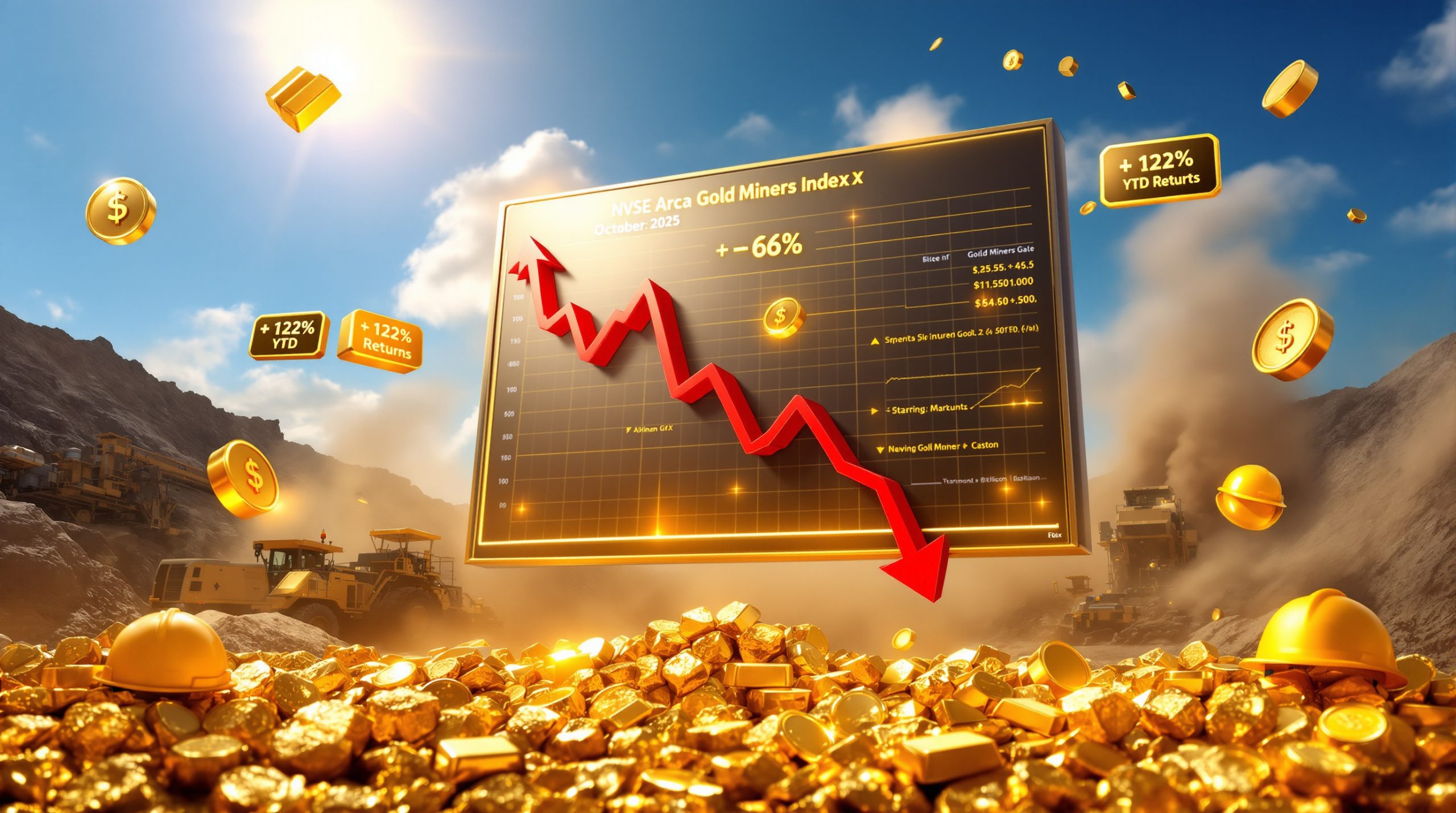A genuine silver squeeze manifests when industrial users, institutional buyers, and physical market participants create sustained demand pressure that overwhelms available supply channels. Unlike coordinated retail buying campaigns that characterised earlier market movements, a real silver squeeze involves entities requiring actual physical delivery rather than cash settlement mechanisms. Furthermore, the current market conditions suggest this phenomenon extends beyond typical investment-driven price movements into fundamental supply-demand imbalances.
According to the London Bullion Market Association (LBMA), silver lease rates serve as a critical indicator of physical market stress. When these rates exceed 20-30%, they signal severe supply tightness in the physical market. The World Silver Survey 2024 from The Silver Institute distinguishes between retail-driven price movements and institutional demand that creates lasting supply chain disruptions across major trading centres.
Defining Physical Market Pressure vs. Retail-Driven Movements
London's physical silver market currently exhibits classic squeeze characteristics that differentiate this situation from previous retail-driven events. The CME Group defines backwardation as occurring when spot prices exceed futures prices, typically indicating immediate physical demand exceeding available supply. However, the current silver market squeeze demonstrates more fundamental structural issues.
Key indicators of the current market stress include:
- Spot prices trading above futures contracts creating unusual pricing relationships
- Physical delivery constraints forcing premium adjustments across regional markets
- Lease rates approaching crisis levels with some reports indicating rates above traditional norms
- Cross-regional arbitrage disruptions requiring expensive air freight movements
The London Bullion Market Association reports that London serves as the primary global hub for wholesale silver trading, with daily clearing volumes averaging 250 million ounces in 2023. Approximately 1 billion ounces remain stored in London vaults as of Q4 2023, representing a critical component of global physical silver availability.
Critical Mineral Classification Impact on Supply Chains
The U.S. Geological Survey's 2024 Critical Minerals List includes silver, as announced by the Department of the Interior in February 2024, citing its importance in renewable energy, electronics, and national defence applications. This designation fundamentally altered market dynamics through several operational changes:
- Export controls requiring additional documentation and government approval processes
- Strategic stockpiling programmes receiving federal funding priority from government agencies
- Interstate commerce regulations applying to large physical movements of silver inventory
- Mining operations receiving expedited permitting consideration for strategic projects
The U.S. Department of Energy's Critical Minerals Security Program from 2024 outlines how these restrictions create regional supply bottlenecks and limit traditional arbitrage mechanisms that previously helped balance global silver markets. Additionally, this classification impacts silver vs. gold performance through regulatory differentiation.
How Silver's Byproduct Nature Amplifies Squeeze Potential
Base Metal Mining Dependencies and Supply Constraints
According to the U.S. Geological Survey Mineral Commodity Summaries 2024, approximately 70% of global silver production emerges as a byproduct or co-product from other mining operations. This structure creates unique supply dynamics that differentiate silver from primary metals:
| Primary Metal | Silver Byproduct Share | Response Time to Price Signals |
|---|---|---|
| Lead/Zinc | ~36% | 3-7 years (major expansions) |
| Copper | ~26% | 5-10 years (new projects) |
| Gold | ~8% | 1-3 years (optimisation) |
KGHM Polska Miedź S.A., Poland's state-owned copper producer, exemplifies this dynamic by producing 1,322 tonnes of silver in 2023 as a byproduct of copper mining operations. This makes it one of the world's largest silver producers without operating a single primary silver mine.
Industrial Demand Inelasticity During Supply Shortages
The Silver Institute's World Silver Survey 2024 reveals critical aspects of industrial silver consumption that resist typical supply-demand adjustments:
- Photovoltaic applications consumed 185 million ounces in 2023 with no commercially viable substitutes
- Electronics sector utilised 265 million ounces requiring specific conductivity properties
- Silver represents less than 1% of total cost in most solar panel manufacturing processes
- Medical applications demanding antimicrobial properties cannot substitute alternative materials
This inelasticity means industrial users continue purchasing silver regardless of price increases. Consequently, production shutdowns would cost far more than absorbing higher material costs, creating the foundation for a real silver squeeze.
Time Lag Between Price Signals and Production Response
Mining industry analysis from S&P Global Market Intelligence indicates that large-scale copper projects require 5-10 years from discovery to production. Moreover, major expansions take 3-7 years even with existing infrastructure. The Cobre Panama mine by First Quantum Minerals serves as a prime example, taking 8 years from construction start to full production (2011-2019) with capital investment exceeding $6 billion.
This extended timeline creates a critical gap where:
- Current price increases won't impact supply until the next decade
- Existing mines operate at capacity regardless of silver premiums
- New project development faces permitting and construction delays
- Byproduct nature limits dedicated silver production expansion
Could Silver Reach Triple-Digit Prices? Analyzing the Probability
Historical Precedent and Inflation-Adjusted Targets
According to the U.S. Bureau of Labour Statistics CPI Inflation Calculator, silver's January 1980 peak of $48.70 (London Fix) adjusts to approximately $187 in December 2024 dollars using conservative government inflation metrics. Using broader inflation measures such as M2 money supply growth, the adjusted figure exceeds $800. This establishes multiple frameworks for potential price discovery during a real silver squeeze scenario.
Bank of America Global Research issued a report in early 2025 projecting silver could reach $65 per ounce by end of 2026. The report cited supply constraints and industrial demand growth, specifically noting that London market conditions had created what they termed "a state of seizure with limited physical availability".
Supply Deficit Mathematics and Cumulative Impact
According to The Silver Institute's annual surveys spanning 2018-2023, silver markets have experienced persistent structural deficits. These cumulative deficits create conditions where gold-silver ratio insights become increasingly relevant for understanding market dynamics:
- 2018: Deficit of 35.4 million ounces
- 2019: Deficit of 55.6 million ounces
- 2020: Deficit of 51.8 million ounces
- 2021: Deficit of 186.4 million ounces
- 2022: Deficit of 237.7 million ounces
- 2023: Deficit of 184.3 million ounces
These cumulative deficits total over 750 million ounces over six years. This represents approximately 28% of annual global mine production, creating mathematical conditions where above-ground inventory continues declining whilst industrial demand growth outpaces mining output.
Central Bank Policies and Monetary Debasement Trends
According to World Gold Council data, central banks purchased 1,037 tonnes of gold in 2023, with 2024 purchases exceeding 1,000 tonnes as of Q3 2024. This represents the highest level of annual central bank gold buying since 1967, indicating institutional recognition of monetary debasement risks.
Whilst central banks historically focus on gold reserves rather than silver, the broader monetary environment supports precious metals through unprecedented debt-to-GDP ratios requiring currency debasement. This creates spillover effects into silver markets as industrial and investment demand converge.
Market Structure Vulnerabilities That Enable Price Spikes
Paper-to-Physical Ratios and Delivery Stress Points
According to CPM Group's Silver Yearbook 2024, open interest in silver futures and options markets represents approximately 150-200 times annual mine production. The total notional value of silver derivatives exceeds physically available silver by substantial margins. However, the majority of contracts remain cash-settled rather than physically delivered.
CME Group data for 2023 reveals critical delivery statistics that highlight potential vulnerabilities during a real silver squeeze:
- Less than 3% of silver futures contracts result in physical delivery
- Registered (deliverable) COMEX silver inventory averaged 65 million ounces
- This represents approximately 7% of annual global industrial demand
- Inventory levels fluctuate between 30-120 million ounces historically
Short Position Dynamics and Forced Covering Scenarios
Commodity Futures Trading Commission (CFTC) Commitment of Traders reports show commercial traders typically maintain substantial short positions in silver futures as hedging operations. During periods of rapid price appreciation, margin requirements increase significantly, potentially forcing position liquidation through several mechanisms.
Furthermore, squeeze pricing strategies become critical for understanding how these dynamics unfold.
Critical Market Dynamic: When physical delivery demands exceed available registered inventory, traditional cash settlement mechanisms break down, forcing actual metal procurement at prevailing market prices regardless of derivative contract terms.
Historical precedent from March 2020's market dislocations demonstrates how physical delivery logistics disruptions create basis dislocations between futures and spot prices. CME raised margins multiple times, and spread differentials between New York and London markets exceeded typical levels by factors of 5-10x.
Geographic Concentration Risks in Trading Centres
London's dominance in physical silver settlement creates systemic vulnerability when supply chains experience stress. The concentration of trading activity in specific geographic hubs means disruptions in these locations have outsised impacts on global pricing mechanisms:
- London processes majority of wholesale silver transactions globally
- Shanghai premium disconnects indicate regional supply shortages in Asian markets
- New York futures market influences global pricing through COMEX mechanisms
- Limited alternative delivery points exist during crisis periods for physical settlement
Investment Strategy Considerations During Potential Squeeze Events
Risk Management Approaches for Volatile Markets
Historical analysis shows silver typically exhibits 2-3 times the volatility of gold prices during market stress periods. The 2011 precious metals rally illustrates this pattern, where silver rose from $18 to $48 (167% gain) over 8 months, then corrected 45% within 5 days according to historical data sources.
Professional risk management during squeeze scenarios requires understanding that markets experiencing parabolic moves often see equally dramatic corrections. Consequently, disciplined profit-taking strategies outperform momentum chasing approaches, making comprehensive investment strategy guide knowledge essential.
Physical vs. Paper Silver Exposure During Market Stress
According to World Silver Survey 2024, silver-backed ETFs held 692 million ounces as of December 2023. iShares Silver Trust (SLV) represents the largest holding at approximately 477 million ounces under management. Different silver investment vehicles perform variably during squeeze events:
Physical Silver Performance:
- Maintains intrinsic value during market stress
- Faces liquidity constraints and storage considerations
- Premium variations occur during supply shortages
- Transportation and insurance costs increase during volatility
ETF Holdings Characteristics:
- May experience premium/discount variations to net asset value
- Provide liquidity during normal market conditions
- Face potential redemption pressure during extreme events
- Counterparty risk exists with underlying custodial arrangements
Mining Equity Dynamics:
- Analysis indicates 2-3x leverage to silver prices during bull markets
- Bear market conditions may see 1.5-2x decline rates relative to metal prices
- Operational risks and management execution impact individual company performance
- Jurisdictional factors create additional risk layers beyond commodity exposure
Timing Considerations and Market Cycle Recognition
Successful navigation of squeeze events requires recognition of distinct phases that characterise precious metals market cycles:
- Early-stage accumulation opportunities before mainstream recognition develops
- Mid-stage momentum phases with maximum volatility and media attention
- Late-stage distribution patterns signalling potential exhaustion and reversal
- Post-squeeze consolidation periods offering strategic re-entry points for patient investors
Industrial Demand Drivers Supporting Higher Price Levels
Solar Energy Sector Growth and Silver Requirements
The International Energy Agency's Renewable Energy Market Update 2024 projects transformational growth in solar installations that directly impacts silver demand:
- Global solar PV capacity additions to exceed 400 GW annually by 2025
- Total installed solar capacity to triple by 2030 compared to 2020 levels
- Approximately 4-5 billion solar panels requiring 75-100 million ounces annually for new installations
The Silver Institute's research on solar energy applications reveals specific technical requirements. For instance, silver shortages affecting renewable energy have become a critical concern for manufacturers:
- Average silver content per solar panel ranges 18-20 grams with no commercially viable substitutes
- Photovoltaic demand reached 185 million ounces in 2023 representing over 20% of total industrial consumption
- Silver represents less than 1% of total solar panel cost making demand highly price-inelastic
- Projected solar installations through 2030 could require over 250 million ounces annually
Automotive Electrification and Technological Applications
According to the International Energy Agency's Global EV Outlook 2024, automotive electrification creates substantial incremental silver demand through multiple channels:
Electric Vehicle Silver Content:
- Traditional internal combustion vehicles: 15-28 grams of silver
- Hybrid vehicles: 18-34 grams of silver
- Battery electric vehicles (BEVs): 25-50 grams of silver
- Plug-in hybrid electric vehicles (PHEVs): 30-60 grams of silver
Market Growth Projections:
- Global EV sales reached 14 million units in 2023
- Projected to reach 45 million units annually by 2030
- Increased automotive electrification represents additional 400-600 tonnes of silver demand annually
Telecommunications infrastructure development adds another demand layer through 5G network deployment. Industry analysis indicates 5G base stations use 3-4 times more silver than 4G equipment. Global 5G infrastructure buildout requires an estimated 30 million ounces of additional silver through 2027.
Geopolitical Factors Influencing Silver Market Dynamics
Trade Policy Impacts on Global Silver Flows
According to USGS Mineral Commodity Summaries 2024, major silver producing countries control significant portions of global supply, creating geopolitical concentration risks:
Top Silver Producing Nations (2023):
- Mexico: 6,000 tonnes (22% of global production)
- China: 3,500 tonnes (13% of global production)
- Peru: 3,300 tonnes (12% of global production)
- Chile: 1,400 tonnes (5% of global production)
- Australia: 1,300 tonnes (5% of global production)
International trade tensions affect silver markets through various policy mechanisms that disrupt traditional supply chains and create regional pricing disconnects. The U.S. Department of Commerce's Critical Minerals Trade Analysis from 2024 documents how export restrictions and licensing requirements impact commodity flows.
Mining Jurisdiction Risks and Production Uncertainties
According to S&P Global Market Intelligence's Mining Taxation and Regulatory Risk report from 2024, resource nationalism has intensified globally. Over 20 countries have increased mining royalties or taxes since 2020. This trend particularly impacts silver production as major producing nations implement policy changes.
Regional Risk Factors:
Mexico (22% of global production):
- Government proposed mining law reforms in 2023 prioritising lithium and critical minerals
- Increased government oversight of mining concessions under consideration
- Stricter environmental requirements potentially impacting existing operations
Peru (12% of global production):
- Experienced significant political turmoil in 2022-2023 affecting mining operations
- Multiple mining projects suspended due to community protests
- Las Bambas copper-silver mine temporarily closed multiple times creating supply disruptions
China (13% of global production):
- Announced export controls on antimony, gallium, and germanium in 2023
- Precedent established for critical mineral export licensing requirements
- Potential silver export restrictions during supply stress periods
Technical Market Indicators Supporting Squeeze Scenarios
Lease Rate Analysis and Market Stress Measurements
Silver lease rates provide critical intelligence about physical market conditions and supply availability. According to precious metals market data, lease rate levels indicate different degrees of market stress:
Lease Rate Interpretation Framework:
- Normal conditions: 0.1% to 1.5% annually
- Elevated supply tightness: 5% to 15% annually
- Crisis-level shortage indicators: Above 20% annually
- Extreme physical shortage events: Exceeding 30% annually
Sustained lease rates above 20% historically correlate with backwardation patterns where spot prices trade at premiums to futures contracts. This pricing relationship indicates market participants value immediate delivery over future delivery commitments. Therefore, it suggests physical supply constraints rather than financial speculation.
Inventory Level Monitoring and Depletion Trends
CME Group classifies COMEX silver inventory into two distinct categories that provide insight into available supply for physical delivery:
- Registered Silver: Metal warranted for delivery against futures contracts
- Eligible Silver: Metal stored in approved warehouses but not currently available for delivery
Historical registered inventory ranges between 30-120 million ounces over the past decade. Current levels require daily monitoring during squeeze scenarios. The ratio between registered and eligible inventory provides early warning signals when available delivery stock approaches critically low levels.
Exchange-traded fund holdings represent another critical inventory metric, with silver-backed ETFs holding 692 million ounces as of December 2023. Significant outflows from these vehicles during market stress can indicate institutional profit-taking or supply redirection to industrial users.
Long-Term Outlook and Structural Market Changes
Supply-Side Constraints and Production Limitations
Silver supply faces permanent structural challenges that extend beyond cyclical demand fluctuations and create long-term supportive conditions for higher prices. Understanding physical silver shortages becomes essential for recognising these constraints.
Geological and Operational Constraints:
- Declining ore grades at existing mining operations increase extraction costs and reduce output
- Limited new discovery pipeline for major deposits constrains future supply growth
- Environmental compliance costs reducing project economics for marginal operations
- Energy price impacts on extraction and processing costs affecting production viability
The byproduct nature of silver production means supply response to price signals remains constrained by base metal mining economics rather than silver-specific incentives. Major copper and lead-zinc projects require substantial capital investment and extended development timeframes that limit supply elasticity.
Demand Growth Trajectories and Consumption Patterns
Multiple sectors demonstrate sustained silver demand growth that appears structurally permanent rather than cyclical:
Technology Sector Expansion:
- 5G infrastructure buildout requiring specialised high-conductivity applications
- Internet of Things (IoT) device proliferation using silver-based components
- Artificial intelligence hardware demanding enhanced electrical performance
- Quantum computing research utilising silver's unique properties
Infrastructure Modernisation:
- Smart grid development incorporating silver-based switching and control systems
- Electric vehicle charging networks requiring conductive components
- Renewable energy storage systems using silver in battery technology
- Modern building automation systems with silver-based sensors and controls
Emerging Market Development:
- Rising middle-class populations increasing electronics consumption
- Industrial modernisation requiring silver-intensive manufacturing processes
- Healthcare system expansion utilising antimicrobial silver applications
- Water treatment infrastructure development in developing nations
Market Structure Evolution and Trading Mechanism Changes
Silver markets continue evolving through technological and regulatory developments that may impact future price discovery and trading patterns:
Electronic Trading Platform Development:
- Blockchain-based settlement systems reducing counterparty risk and settlement times
- Fractional ownership models increasing retail accessibility to physical silver
- Automated trading algorithms potentially amplifying volatility during stress periods
- Cross-border payment systems enabling direct commodity-based transactions
Regulatory Framework Updates:
- Market manipulation enforcement addressing spoofing and artificial price suppression
- Critical mineral designation requirements affecting international trade flows
- Environmental regulations influencing mining operation permits and expansion plans
- Financial system stability measures potentially affecting derivative market structure
These structural changes create both opportunities and risks for silver market participants. Traditional trading relationships and arbitrage mechanisms evolve alongside technological and regulatory developments.
Investment Implications and Strategic Considerations
The convergence of supply constraints, industrial demand growth, and monetary system instability creates a unique environment where silver markets face multiple bullish catalysts simultaneously. The real silver squeeze emerges not from coordinated retail campaigns but from fundamental supply-demand imbalances exacerbated by geopolitical tensions and critical mineral designations.
Industrial users cannot substitute silver in critical applications, creating inelastic demand that must be satisfied regardless of price levels. Meanwhile, supply response remains constrained by the byproduct nature of silver production and extended development timelines for major mining projects.
Investment Considerations for Market Participants:
- Physical silver ownership provides direct exposure but faces storage and liquidity considerations
- ETF vehicles offer liquidity but carry counterparty risk and potential premium/discount variations
- Mining equity exposure provides leveraged upside but includes operational and jurisdictional risks
- Futures contracts enable speculation but face delivery uncertainties during supply stress
The potential for triple-digit silver prices exists within current market fundamentals, though timing remains unpredictable. Historical precedent combined with inflation-adjusted targets suggests significant upside potential from current price levels.
Disclaimer: This analysis is for educational purposes only and does not constitute investment advice. Precious metals investments carry substantial risks including price volatility, liquidity constraints, and potential total loss of capital. Past performance does not guarantee future results. Readers should conduct their own research and consult qualified financial advisors before making investment decisions.
Looking to Capitalise on Silver Market Opportunities?
Discovery Alert's proprietary Discovery IQ model delivers real-time alerts on significant silver and precious metals discoveries across the ASX, empowering subscribers to identify actionable opportunities ahead of the broader market. Explore how major mineral discoveries can generate substantial returns by visiting Discovery Alert's dedicated discoveries page, then begin your 30-day free trial to position yourself strategically before the next market-moving announcement.




